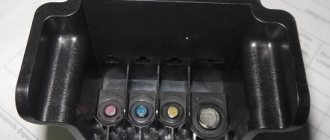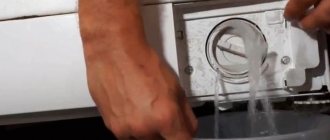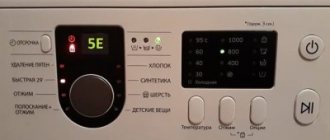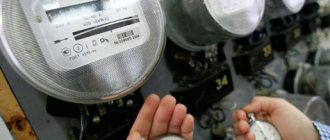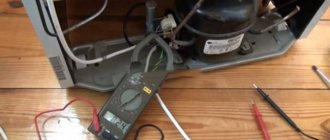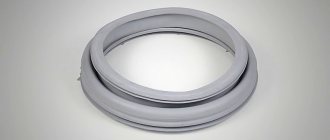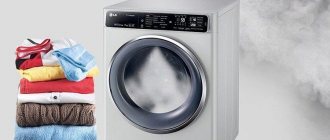06/05/2017 Maria Ivanova 4 comments
If you use a boiler for a very long time, but do not pay attention to proper care of it, then sooner or later scale will form on the inside of the product. It settles on the internal walls and heating elements, being the main factor causing boiler failure.
- 1 When should you clean?
- 2 Draining water from the boiler
- 3 How to descale a boiler?
- 4 Boiler assembly
- 5 How to clean an Ariston boiler?
- 6 Recommendations
- 7 How to choose the right boiler?
When should you clean?
Before you start cleaning a water heating unit of any brand - Atlantic, Oasis or another - you should analyze the operation of the product, listen to the noise and check the quality of water heating.
The main “bells” signaling that it’s time to clean the product are the following factors:
- the water takes a very long time to heat up;
- its temperature changed - it became too hot, or vice versa;
- the amount of electricity consumed by the boiler has increased, and the meter began to rewind kilowatts many times faster after the device was started;
- overheating of the storage tank;
- in case of frequent switching on and off of the device;
- if you hear hissing from the boiler while heating the water.
What is the difference between cleaning a storage and instantaneous water heater?
Instantaneous water heater
What was described earlier applied to storage-type water heaters. A instantaneous water heater differs from it in its design and operating principle.
In the flow-through type, water does not stagnate in the tank, because there is simply no such container. The water heats up as it passes through a narrow tube. It is not stored anywhere, but is served from the tap immediately after heating.
Draining water from the boiler
Before cleaning the device, you need to drain all the water from it. This is the most important rule that must be followed without question before starting repair and cleaning work.
If the boiler is located above a bathtub or sink, then this position of the device greatly facilitates draining the water. You don’t have to select a suitable container or install it. And there will be much less splashing. However, not all devices make it easy to drain water, even under the above conditions.
If the heating element is screwed into the tank, then draining will be easy. But there are some models in which, before getting to the stage of draining the liquid, you will have to unscrew several nuts.
If the boiler is installed and connected correctly immediately after purchase, no problems should arise. You need to act in a certain way.
- Disconnect the power supply from the device and turn off the main water supply valve. Do the same with the tap located next to the water heater.
- Turn on the hot water at a nearby faucet and wait until it drains completely.
- Place a hose on the drain fitting and direct it into the sewer hole to drain water.
If there are no drains or taps, water is released through a safety valve. But this is a very long process. Therefore, you should first wait until the liquid cools completely.
The absence of a fitting is due to the need to drain by dismantling the hot pipe and completely disconnecting it from the water heater. After unscrewing the safety valve, air will enter the boiler, pushing out the water.
This method will solve the problem of quickly draining water from the device.
Do-it-yourself cleaning of water heaters from odor inside
Many owners of water heaters notice over time that the heated water begins to smell terribly. This unbearable smell may have several reasons:
- Dirty water is supplied to the boiler. If there are a lot of foreign impurities in the water, especially hydrogen sulfide, it emits an unpleasant odor.
- There are specific bacteria and fungi in the tank. Such living creatures are born in the limescale deposits on the walls of the container. As long as there are not many microorganisms, the smell of the water does not change. But over time, their number increases, and the water begins to stink.
- Cheap or damaged water supply. Low-quality tubular plastic transfers its chemical smell to water. And old metal water pipes are ideal for the life of bacteria and fungi.
Water with hydrogen sulfide is impossible to smell
There is a way to determine which of these cases occurs:
- Run cold tap water for 5 minutes. Then place a clean bottle under the stream and close it after filling. After half an hour, you need to open the bottle and check the smell of the water. If it smells bad, there is a problem with the pipes or water.
- If cold water from a bottle smells normal, you need to look for the reason in the boiler itself. To do this, you again need to fill the plastic container, but only from the hot tap closest to the water heater. We wait 30 minutes and smell. If you can’t breathe from the bottle, it means there are harmful microorganisms in the tank.
In order to eliminate the unpleasant odor due to bad water or rusty pipes, you can do the following:
- Install a filter that removes bad-smelling gases from the water.
- Complain to the SES about the poor quality of tap water.
In the first case, you don’t have to wait for someone to come and fix the problem. Therefore, if you can’t stand the smelly water, it’s easier and faster to install a filter.
Problems with microorganisms in the boiler are solved differently:
- Sterilization of the tank. The water in the boiler is brought to a boil and remains in this state for a long time.
- Removing scale from a water heater (see above). This will destroy the favorable environment for the proliferation of microbes and bacteria.
To prevent smelly water from coming out of the boiler again, you need to follow simple preventive measures:
- Do not leave water in the water heater when it is not in use for a long time.
- Periodically descale the tank.
- It is advisable to install a filter.
- Pay attention to water quality. If necessary, contact the sanitary and epidemiological station.
How to descale a boiler?
Scale is the biggest problem facing water heaters. Its removal must be timely. But how to clean a boiler at home? Similar work involves caring for heating elements (cleaning them) and water tanks (tanks).
1. Clean the heating element , which we previously removed from the device. We proceed as follows.
- We remove large pieces of scale using a kitchen knife, protect the surface by erasing residual small inclusions with sandpaper.
- If it was not possible to clean the heating element mechanically, you can soak it in water with lemon powder dissolved there. A plastic bottle with a pre-cut neck can act as a container.
- After complete cleaning, rinse the heating element with running water.
2. Clean the tank. Before you start working on removing scale from inside the tank, you need to inspect it. If scale has not strongly attacked the inner surface of the tank, then regular washing with water will do. Using a sponge, many contaminants are removed - mucus, upper soft layers of scale. Everything is washed off from the shower head.
If the tank is too dirty, you will have to resort to professional or folk remedies. As improvised methods, you can use acetic acid at the rate of 1 packet of product per liter of water. Fill the tank with the prepared solution and leave until the morning. Drain the liquid and rinse the tank thoroughly with water.
The inside of the tank is covered with enamel. It is susceptible to chemical components. Therefore, avoid abrasive substances and hard brushes.
Technology and means of cleaning heating elements without disassembling
It is not always possible to disassemble the boiler and carry out deep cleaning mechanically. This process is labor-intensive and complex. To disassemble a volumetric water heater, outside help is required. As an first aid and preventative treatment, you can use special compounds that can dissolve and clean dirt and scale.
By professional means
This method is less effective than the mechanical one, but it is easier to use and does not involve the risk of element breakage. Before starting descaling work, it is recommended to remove the water heater from the wall and clean the inside of the tank. The container is filled with a special solution containing a chemical.
For water passing through rusty water pipes, products containing phosphoric acid are recommended. Experts recommend getting rid of scale that destroys the water heater using:
- Cillit ZN/I;
- Aipakon;
- AlphaPhos;
- Thermagent Active.
For equipment that has served for more than 2-3 years, descaling agents based on other acids are not recommended.
You can clean the inside of the water heater using a surfactant-based product. Steeltex and Alumtex are considered the best in this segment.
Carefully read the instructions on how to clean your water heater from scale deposits! The manufacturer indicates the exposure time of the solution on the packaging!
In most cases, you should prepare a solution: mix the product with water in the required concentration. Open the cold water supply to the boiler, drain hot water by 2/3. Using the reverse connection of the water heater, it is necessary to pour the solution inside the tank. Leave for 5-6 hours, drain through a hot running tap.
Traditional methods
If you couldn’t find a specialized product in stores to clean the heating element from scale in a water heater or its cost is high, you can turn to available home remedies for help. Deposits can be dealt with using regular citric acid or vinegar.
To prepare the active solution, you need to mix 0.5 kg of acid powder with 2 liters of water. Empty the tank 1/3 of the water, pour acid from the scale inside. Leave to descale overnight. By morning, rust and lime deposits will dissolve.
Carefully! The inside surface of the water heater is protected by thin enamel, which is easily damaged by strong chemicals.
Boiler assembly
Before you begin assembling the device, inspect the rubber seal. Its integrity must not be compromised. That is, there cannot be scratches, breaks, gouges, or plaque on it.
You need to reassemble in the reverse order from how you disassembled the device. It is better to coat all rubber parts with sealant, this will protect the device from leaking.
After installing the heating element, return the boiler to its original place. Open the hot water drain tap and turn on the cold water. When the boiler is full, check the seal.
The next step is to install the thermostat and connect the wires. A photograph taken earlier will help you. The procedure will be similar if you need to clean an indirect heating boiler.
When is it necessary to clean a water heater?
There are a number of signs that clearly indicate the need to descale the boiler:
- Increasing the heating time to a given temperature;
- Increased energy consumption;
- Heating the outer shell of the device;
- The occurrence of extraneous sounds during operation.
Coloring of heated water and loss of transparency also serves as a signal for immediate maintenance.
Important!
It is recommended to carry out complete cleaning of the water heater at intervals of 1.5 to 2 years, and in case of continuous operation, this period is reduced to 1 year.
How to clean an Ariston boiler?
Cleaning the boiler of this model is carried out in several steps.
- We completely de-energize the device - remove the plug from the socket or turn off the automatic fuse.
- We interrupt the water supply by shutting off and drain all the liquid in the device.
- After the water has completely drained, turn on the tap, while simultaneously opening the cold drain valve, which must first be put on the hose fitting.
- We lower the hose into an empty bucket and open the hot drain valve.
- We wait for the drain to finish, then remove the leads and leads (hot and cold) so that the fittings become free.
- We lower the boiler to the floor, upside down.
- We remove the fixing bolts holding the cover, thereby freeing access to the holes of the heating element.
- The assembled wire diagram must be photographed so that later during assembly there will be no questions regarding their connection. We remove the wires from the device along with the thermostat.
- Remove the heating element by pulling it out of the housing.
- Fill a basin or bucket with water with dissolved descaling agents and lower the heating element into it. Before immersing in water, all thick layers of scale must be removed from the Ten.
- Fill the tank with hot water with the addition of vinegar or citric acid.
- Leave for several hours (ideally 8).
- We drain all the liquid from the tank and return all the elements to their place.
An alternative to traditional lemon juice and vinegar can be an industrial solution, which is applied to the walls of the tank and left for a while to soften the scale.
Why is scale dangerous?
Even a small layer of scale poses a potential danger to the heating element and the washing machine as a whole. In the presence of scale, obstacles are created for heating water due to the fact that the thermal conductivity of scale is many times lower than the thermal conductivity of metal. As a result of this fact, the time for heating water and energy consumption significantly increases.
The danger of scale is that it significantly reduces the service life of the heating element, and if the problem is not resolved in a timely manner, it can lead to the need for a major overhaul of the unit. Therefore, it is necessary to take preventive measures and regularly descale the washing machine.
Recommendations
If you do everything correctly, it will not be difficult to clean the boiler at home. To avoid damaging the device, pay attention to the advice of experts.
- Take pictures of the contacts, then you won’t have to waste time and rack your brains over their correct connection.
- If you have completely disassembled the boiler, take the time to inspect all the parts; perhaps some of them require replacement.
- When washing with an industrial cleaning agent, read the instructions on the bottle before starting work.
- If the heating element is very dirty, it will have to be changed.
- Water filters will help prevent frequent breakdowns of water heaters.
- Before connecting the device to the network, always check the water level in the storage tank; it must be full.
- Observe the operation of the device for a while after cleaning. If a water leak occurs, it will have to be fixed immediately.
How to choose the right boiler?
You should choose a boiler based on indicators such as:
- type of device;
- tank capacity (in liters);
- heating element type;
- product power;
- material from which the body is made;
- how much does the unit cost?
If you buy a water heater for the kitchen and only plan to use it to wash dishes, then a volume of 10-15 liters will be enough for you. But you won’t be able to take a bath or shower with such a device. A large family will be able to carry out all water procedures by purchasing a boiler with a volume of 50-80 liters.
Equally important should be paid to how much the manufacturer asks for his product. However, the fact remains: the price does not always justify the quality. Therefore, before purchasing, it would be a good idea to “browse” through various forums, where people who have bought this or that model of water heater talk about its positive or negative aspects.
Thus, the relatively inexpensive models “Atlantic” and “Oasis”, the price of which starts from 4,500 rubles, have proven themselves well.
Thus, cleaning a water heater at home is not a complicated procedure. Another thing is that it must be timely. Then the device will not only work smoothly, but will also last for a long time.
Cleaning a boiler with a dry heating element
At its core, the procedure for cleaning a water heater equipped with a so-called dry heating element is no different from the usual one. If you decide to disassemble the device for this purpose, then the ceramic element should not be scrubbed mechanically; it must be handled with care. It is better to simply immerse it in a concentrated solution of citric or acetic acid and wait until the scale dissolves. Again, industrial chemicals from the store will do.
Chemical cleaning of a boiler with a dry heating element without disassembly is carried out in the same way as with a conventional heater. The main thing is that before using the detergent, carefully study the instructions on the packaging and follow them strictly.
